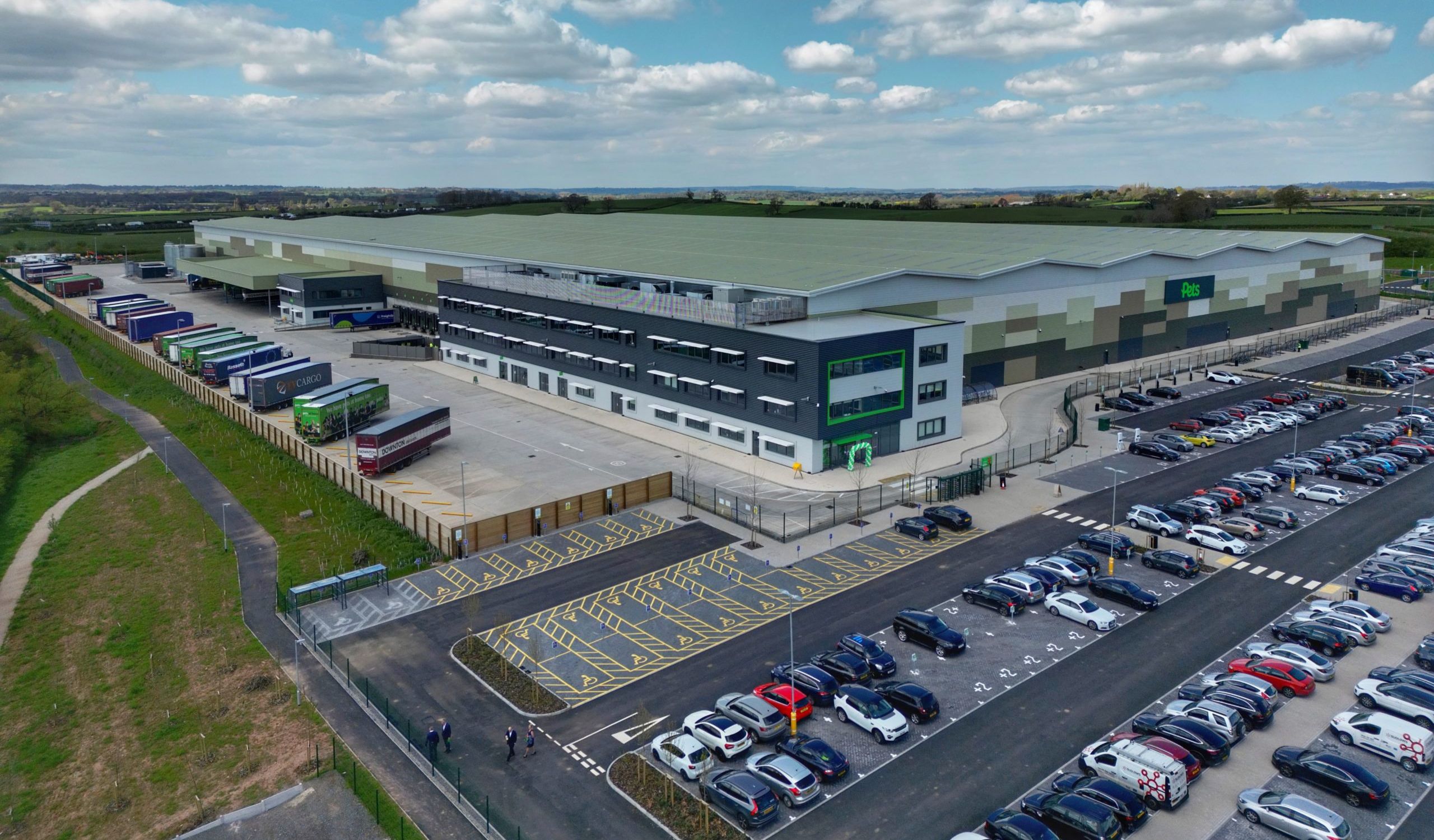For the newly published DeliveryX Warehousing 2023 Report, editor Katie Searles spoke to UK Warehouse Association (UKWA), CEO, Clare Bottle about the UK’s warehousing landscape.

When asked about the emergence of microfulfilment hubs, Bottle responded with her own question: what is a warehouse? That really interests me because you’ve got data centres, you’ve got vertical farming, you’ve got dark kitchens. All of these in the broadest sense could be described as warehouses as well.
What we’re seeing is increased demand for bigger and smaller buildings. Medium sized buildings are not as popular anymore. If you go back even 10 years, there were probably a dozen warehouses that were a million square feet. There might be a hundred now.
Those huge facilities are becoming increasingly popular. Partly because if you’re going to implement automation at scale it makes sense to reduce the number of sites you have and increase the size of those sites.
Amazon – the biggest player – they’ve probably got 30 enormous warehouses, but then what they’ve also got is hundreds and hundreds of local delivery centres. That’s a similar story with a lot of ecommerce players. You need big buildings and tiny ones that are closer to the customer.
It begs a question about planning permission as well, there’s a consultation out at the moment about reforming the arrangements of the planning and permission that might be quite important for making sure that land use is aligned with needs. It is a balance between the economy, society, and the environment. Are we doing the right thing by using these buildings for these purposes? That’s the question that local planners need to answer.
As the ecommerce boom slows, will demand on UK warehousing and that land start to decrease? The growth in warehousing isn’t just about ecommerce. There’s been quite a lot of volatility in supply chains. Even businesses that are holding raw materials for manufacturing tend to hold more. Some of that is localised to the UK and you might attribute it to Brexit.
The fact that it’s more difficult to move goods – people are holding more goods in the UK for that reason. Some of it is a wider problem to do with availability of commodities like micro-chips or the cost of steel, and people are just taking a different approach to how they manage inventory in their supply chain. There are various different factors at play, it’s oversimplifying it to say ‘oh well ecommerce has calmed down so warehousing needs to get back in its box’, there’s a bit more to it than that.
There’s still quite a lot of uncertainty. People want to hold more stock, but of course the risk of holding more stock is that you might end up with overstock. Then there are short shelf life products, things like yoghurt, you never hold loads of stock because it doesn’t work like that. Where it becomes more difficult is when you’re trying to trade off your demand plan against a sort of medium term shelf life of whatever it is that you’re holding.
For example in car parts, if you withdraw a car off the market you still have to be able to support the maintenance of that vehicle for at least 15 years. They’re not obsolete and you’re not allowed to delist them. There are different inventory strategies that apply in different supply chains, but on balance, everybody’s holding a bit more stock than they used to.
We have seen reports of retailers left with overstock even after the sales, after Black Friday, and the January discounting, this must put a strain on warehouses? Yes, absolutely. In textbooks they call it the bullwhip effect. I don’t know what your personal arrangements were for toilet paper in the pandemic, but lots of people will have gone through a stage where they went out and panic bought a lot more than they needed, and then it will take a while for them to have used up all of that stock. That’s the bullwhip effect in a nutshell, and that happens on a grand scale in worldwide supply chains.
Is having your warehouses in the right location for your customers key to providing next-day, same-day, even rapid delivery? Well, yes and no. There’s actually quite a big difference between next-day and same-day in that regard. If you want to do a next-day service you can afford to be somewhere where you can get access to a really good labour market that might not be in the best geographical location for feeding into the networks because most of the parcel delivery networks are so good at doing next-day. But even if you are sending in the goods from – well maybe not the far reaches of West Wales – somewhere like Bristol or Norwich, outside of the traditional golden triangle, you can still manage a next-day service quite adequately.
Of course the advantage there is that you might be able to locate your warehouse somewhere where there’s cheaper land, cheaper property availability, and also more access to labour markets. If you try and recruit a forklift truck driver in Northampton – well, good luck with that.
On that labour shortages issue, is the introduction of technology, more automated warehouses, going to help? There are lots of types of automation, but to summarise there are two ways that you could automate a warehouse. One of them – let’s take Nestle as an example. They went out to tender, they’ve got a three-way deal between them GXO and Swisslog and they’ve built a brand new warehouse in the East Midlands. It’s got to be one of the most automated warehouses I’ve ever seen. It will blow your mind. But that’s a 20 year deal, that’s a three-way partnership with a supplier of automation. It makes sense for a business like Nestle, who let’s be fair, has quite a high profit margin of business. They also have really stringent customer service requirements to meet. They can make reasonable predictions about the future, about what consumer demand is gonna be like, and what they’re going to want to use that building for.
At the other end of the market, there is a medium sized 3PL player, they may have two or three year contracts with their customers. They do not know exactly what the requirements are going to be in that building in 10 years time because they can’t guarantee they’re going to have the exact same customers anymore. If you go back even 10 years ago, those companies would say ‘well, automation’s not for me. I can’t really invest’. Now that’s really changed and I think there’s a couple of things that I’ve probably helped with that – the automation itself.
You can hire a cobot, you can get Robots-as-a-Service, you can get six cobots that go around with your pickers and take away some of the drudgery of the work that they do.If you can build a decent software interface with your WMS, that’s probably the biggest barrier.
The availability of simpler forms of automation I think is one key part. But there’s the digital literacy of the workforce. It’s a topic we’ve discussed quite a bit with some of our associate members that provide automation or digitalisation. Managers will often tell you: ‘our workforce are resistant to change and they won’t be able to deal with this’.
But in fact they almost always underestimate the digital literacy of people in entry level jobs. Everybody’s grown up with a mobile phone. What the workers actually fear is not the digitisation, they fear that their bosses are going to potentially mess it up and they’re going to end up picking up the pieces. There’s a mismatch there between people’s expectations about these change projects. Change definitely needs to be well managed. You can try things out on a smaller scale, but you can also be a bit more ambitious because you can assume that most of your workforce will be able to adopt this technology if it’s a well managed implementation project.
Clare Bottle FCILT is CEO of the UK Warehousing Association and Vice-Chair of Women in Logistics UK. Having joined the logistics industry in the 90s she has worked across a number of sectors including chemicals, construction and food & drink.
Before joining UKWA in 2021, Clare was Associate Director of Warehousing at Coca-Cola Europacific Partners. As head of UKWA, a leading trade association with over 900 members, Clare has pursued an agenda of economic, social and environmental sustainability, as well as driving diversity and inclusion.
This feature originally appeared in the DeliveryX Warehousing 2023 Report, download it in full here.







